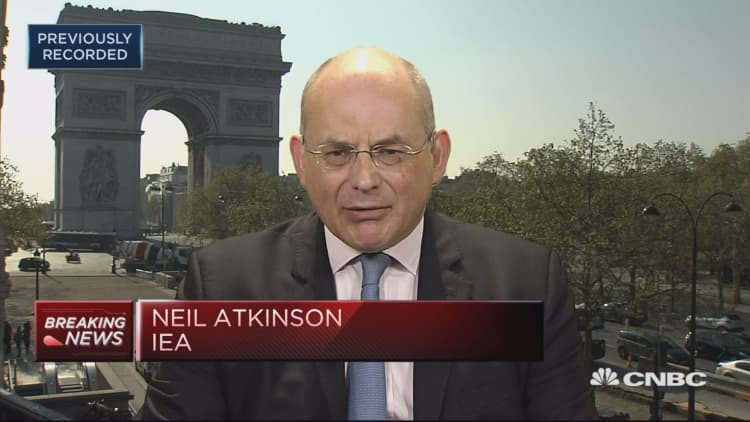
Oil markets are tightening at the start of the second quarter amid a flurry of intensifying risk indicators, the International Energy Agency (IEA) said Thursday.
But, the group warned an "extraordinarily" wide range of views about the health of the global economy was making it difficult to forecast oil prices.
It comes at a time when energy market participants are concerned surging U.S. crude stockpiles and an economic slowdown could soon dent fuel consumption.
However, global oil markets remain firm, amid OPEC-led supply cuts, U.S. sanctions on oil exporters Venezuela and Iran and escalating fighting in Libya.
"The huge increase in oil production we saw in the second half of 2018 has reversed following the implementation of the new Vienna Agreement and the increasing effectiveness of sanctions against Iran and Venezuela," the Paris-based IEA said Thursday.
"This turnaround in supply has contributed to a dramatic increase in prices, with Brent crude rising from $50 a barrel at the end of December to more than $70 a barrel today."
Trump vs. OPEC
International benchmark Brent crude traded at around $71.21 Thursday morning, down 0.7 percent, while U.S. West Texas Intermediate (WTI) stood at $63.95, around 1 percent lower.
Brent and WTI crude futures have risen by approximately 30 and 40 percent respectively since the start of the year.
"In a world where we saw Brent at $86 a barrel in October, $50 a barrel in December and now back to over $70, I think it is a very brave person that attempts to forecast what the price will be at the end of the year," Neil Atkinson, head of the oil industry and markets division at the IEA, told CNBC's "Street Signs" on Thursday.
This year's oil price rally has prompted President Donald Trump to call on OPEC to hike output and tamp down prices. The producer group has so far ignored Trump's warnings.
OPEC, along with Russia and other non-member countries, is trying to keep 1.2 million barrels per day (b/d) off the market through June, following a collapse in crude prices at the end of 2018.
The production curbs, sometimes referred to as the Vienna agreement, aim to drain oversupply from the oil market and boost prices.
OPEC+ alliance members will meet in June to discuss oil policy. Saudi Arabia is leaning toward carrying over the production cuts into the second half of 2019, while Russia refuses to commit to an extension.
"As far as 2019 is concerned, amongst the analyst community there is an extraordinarily wide divergence of view as to how strong growth will be," the IEA said.
"We maintain our forecast of 1.4 million barrels per day, but accept that there are mixed signals about the health of the global economy, and differing views about the likely level of oil prices," the group added.
OPEC's oil production plunges
Some investors are worried an economic downturn over the coming months will soon start to significantly dent fuel demand.
Earlier this week, the International Monetary Fund (IMF) downgraded its global growth forecast to the lowest level in a decade.

The IEA reaffirmed its estimates for global oil demand growth in 2018 and 2019 at 1.3 million b/d and 1.4 million b/d, respectively.
On Thursday, oil supplies from OPEC sank by half a million barrels a day in March, hitting a four-year low, as Saudi Arabia continued to slash output and Venezuela's production plunged amid ongoing economic crisis.
The monthly production decline amounts to roughly half a percent of global oil demand. The drop is greater than the total monthly output of four of OPEC's 14 members.
— CNBC's Tom DiChristopher contributed to this report.


